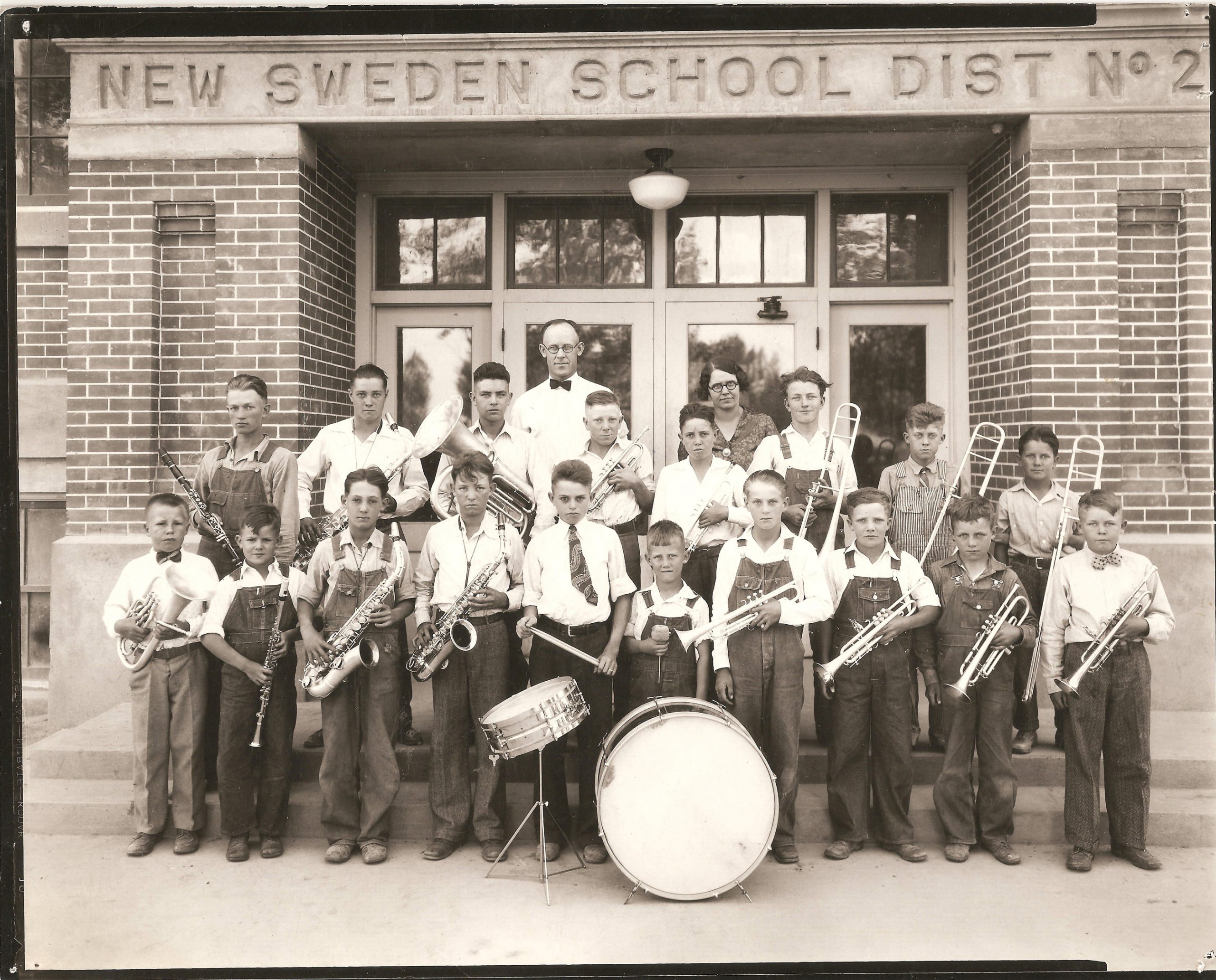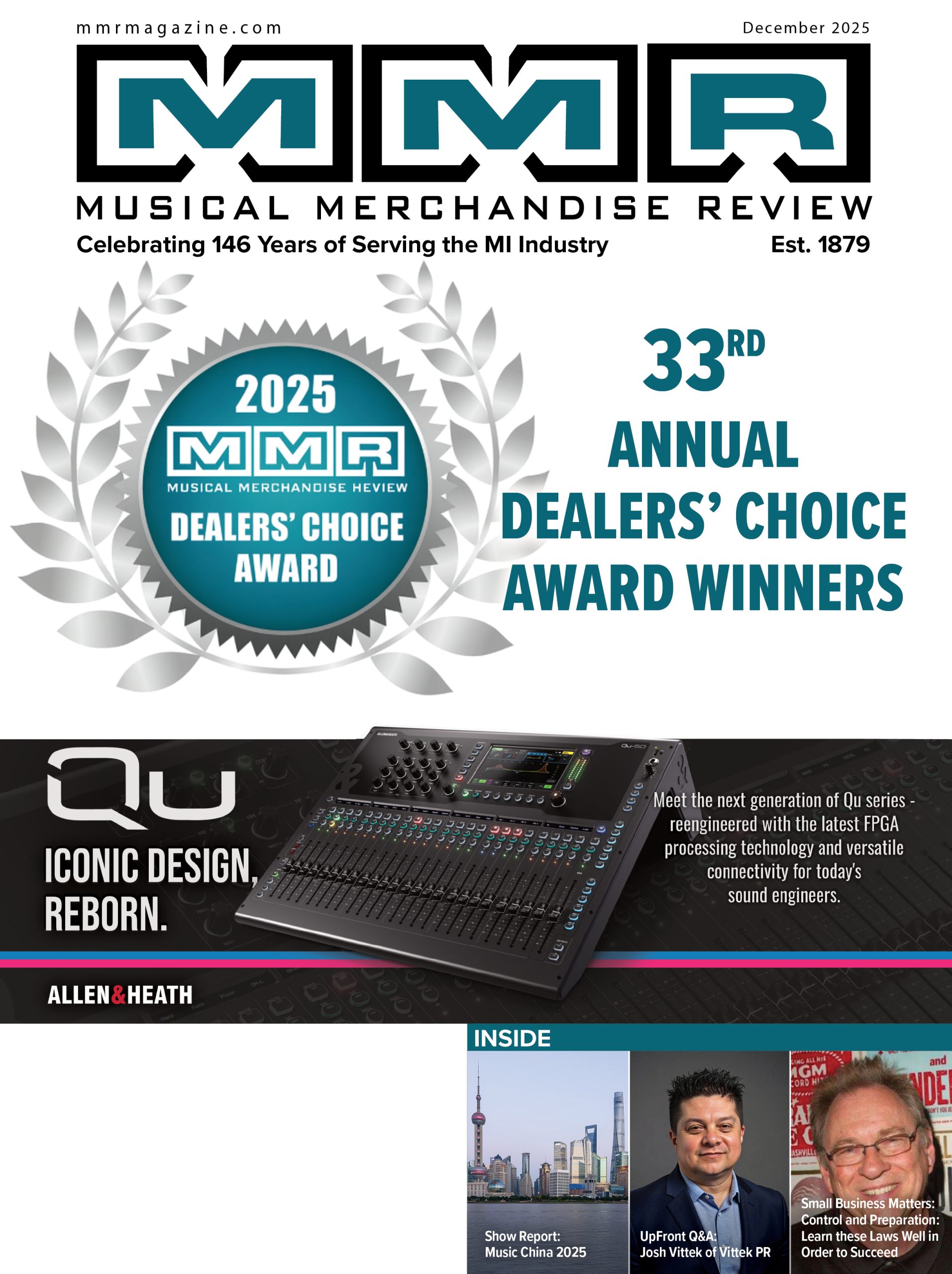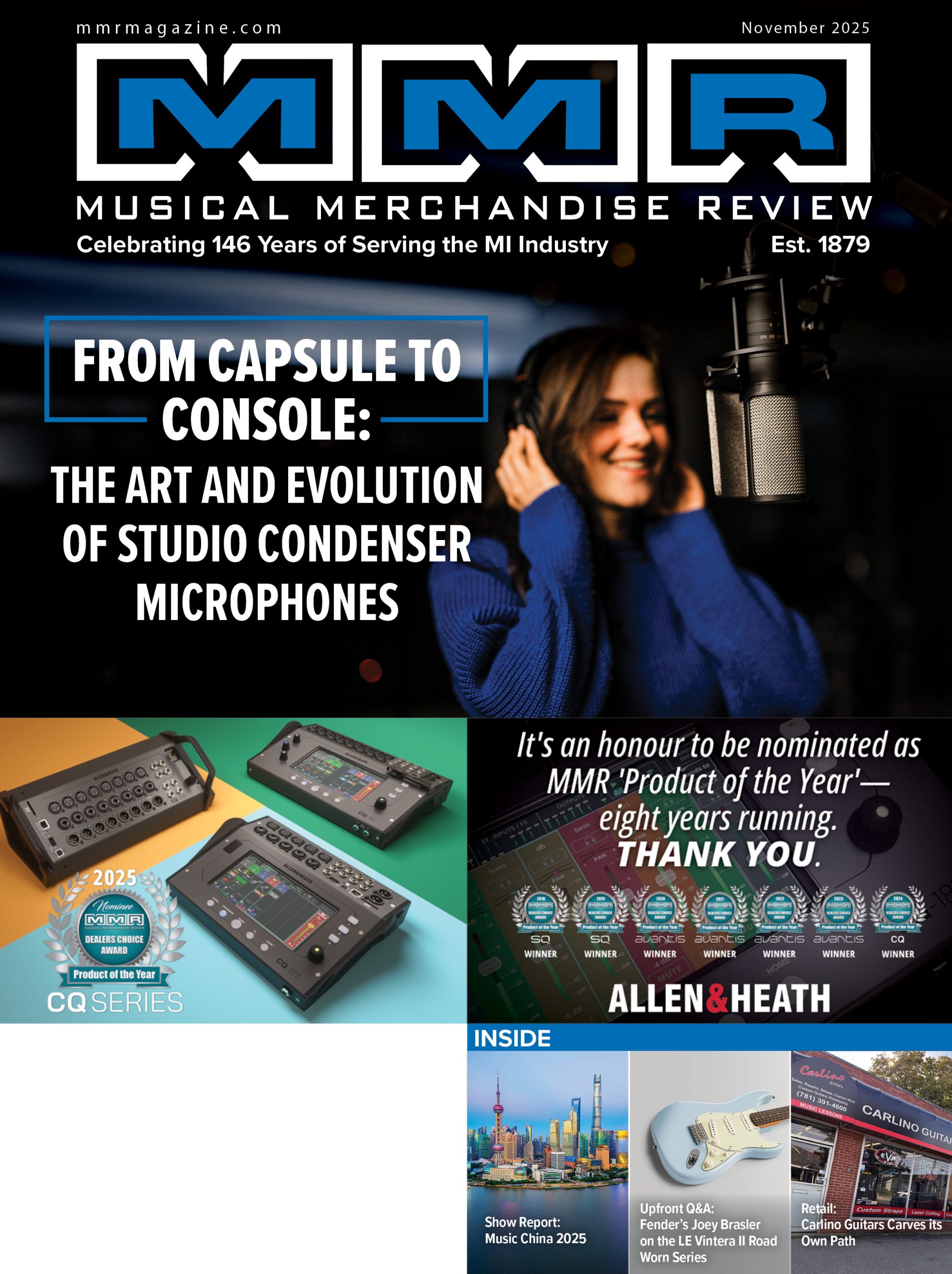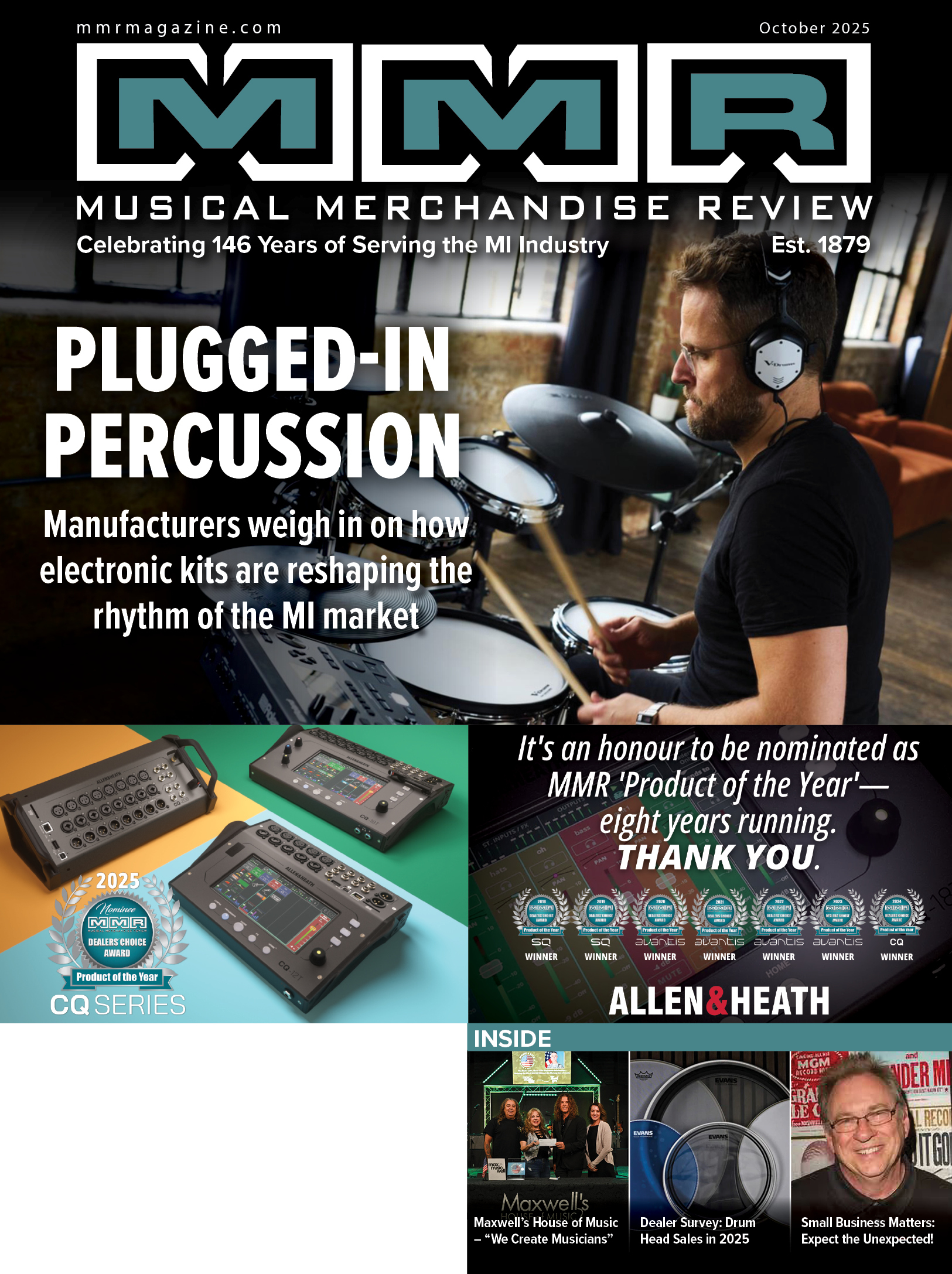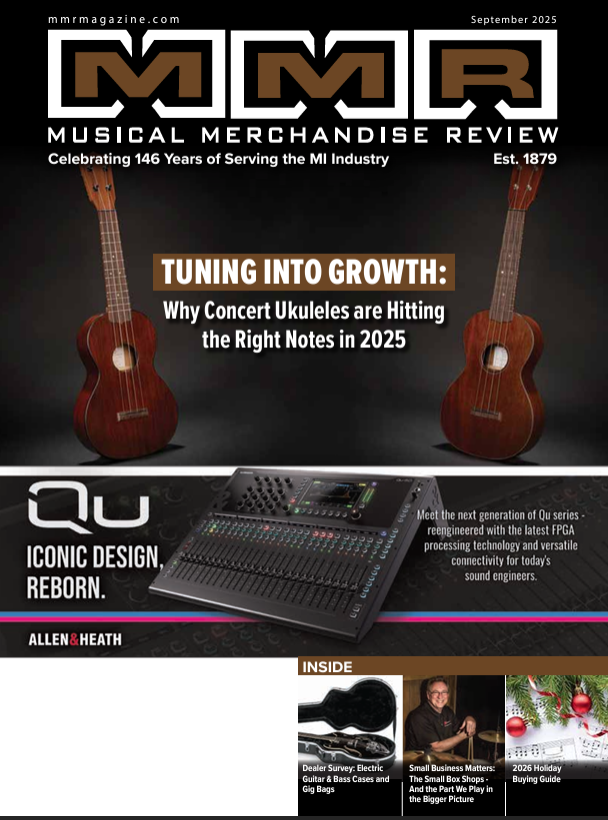 Innovative Canadian guitar manufacturer Riversong Guitars has been hitting well above its weight since launching in the early 2000s, earning a number of awards and accolades (including the 2022 MMR Dealers’ Choice Award for Acoustic Guitar of the Year for the River Pacific P2P) and being embraced by high-profile players and hobbyists alike.
Innovative Canadian guitar manufacturer Riversong Guitars has been hitting well above its weight since launching in the early 2000s, earning a number of awards and accolades (including the 2022 MMR Dealers’ Choice Award for Acoustic Guitar of the Year for the River Pacific P2P) and being embraced by high-profile players and hobbyists alike.
We recently caught up with founder Mike Miltimore to discuss his lifetime in the MI industry, the evolution of the Riversong brand, the recent distribution partnership with Peavey, and plans for the future.
The Riversong Guitars website notes that you grew up, “in the music business with your dad, Lee.” What specifically does Lee do in the industry and how were you first brought into the fold?
Well, I’ve really done all of this on the shoulders of my dad. My dad, Lee, started in the music industry in the early ’70s as an electronics tech repair person. He would travel all throughout the interior of British Columbia repairing sound systems and organs and customizing people’s guitars. And in the early ’80s, he opened up his first kind of real location, basically, that was a storefront that sold PA equipment here in Kamloops. It’s in interior British Columbia, just outside of Vancouver.
I was manipulated from a very early age to work in the family’s business [laughs]. I’ve actually never had a different job than what I’m doing right now, which is kind of weird.
Not at all! That’s awesome.
Yeah, I took full advantage of the opportunities that I had with my dad having a music store. From pre-teen years, I would start taking apart guitars and make, like, an auto parts place for guitars. You’d come in and we’d have all the different buttons and different tuning gears.
You were doing mostly repairs?
Yeah, a lot of repairs of guitars. It was the ’80s, too, so we were also building guitars. We’d take a neck from here and a body from here… Floyd Rose and Kahler tremolos were getting popular then and we were installing those on a lot of guitars. We would retrofit hundreds of Strats with whammy bars, doing all sorts of things and new pickups, you know. At that time EMG pickups also started to become really popular. I don’t know how many EMG pickup systems we installed on guitars – just that was what we did. And then we started to customize guitars and we’d get local artists to paint bodies that we’d buy from Warmoth or All-Parts or something like that. I cut my teeth in taking apart instruments for parts and doing repairs, setups, and under the tutelage of my dad.
Here we are talking about Floyd Rose locking systems and tremolos and EMG pickups. Now, that all sounds kind of like hard rock, metal. How did you go from those guitars to largely acoustic – in other words, what led to the founding of Riversong?
Well, there was a big period in between. I became basically a guitar tech. I also really started to get into sound engineering, doing sound for bands. So every prep rally that we’d have at our school, I was doing all the sound and setting up speakers – Even before I even had my driver’s license, my dad would load up a bunch of speakers and that kind of stuff. He’d drop me off at a festival site for a weekend and I’d run the festival. And back then it was just the little kid running the speakers: “How cute!” But I really cut my teeth fast and hard in that world. So by the time I graduated, I went to college for Electronic Engineering Technology. And an opportunity came up actually to get the Peavey franchise for Kamloops.
Back then in the ’90s, Peavey was a billion-dollar company and it was like Ford versus Chevy. You were either a Fender dealer or you were a Peavey dealer. And we’ve been a Peavey dealer since ’83 and Hartley Peavey treated us super, super well. Basically, I grew up from the income that we got from that franchise. I guess I was just about 19, just past 18, I moved to Kamloops and opened up my own location here under my dad’s name, Lee’s Music.
Was that the catalyst behind the launch of Riversong in the early-mid 2000s? What led up to that?
Yeah. So things got busy. I thought I was going to take over the world as a sound engineer and doing guitar tech work, that kind of a thing. We’d build our own PA systems, all that kind of stuff. And then in 2006, something happened. I hired a guy to help me do repair work because I was getting too busy with the audio-visual side of our business. And the other thing that happened was a movie came out called “The Pick of Destiny.”
Oh, I remember!
We had, I don’t know, 30 staff at the time. I invited everybody on staff to go see this movie, and I was gonna pay for their tickets. We went there, it was snowing, half of our staff couldn’t get there because of the bus system went down. And we loved the movie. We thought, “This is the greatest movie ever!” And we were the only people in the theater. And because half our staff couldn’t make it, I said, “We’ll just go again tomorrow night.”
And then coming out of the movie, I turned to the guy I had hired to help me with guitar repairs, who was a luthier that went to Summit Guitar Building School in Vancouver Island, and said, “We have to build guitars.” It was like divine. So literally the next week I went out and we had just did a big sale with our audio-visual company. And I invested $3,000 – that’s all I had – in a band saw, a table saw, a jointer, and a planer, I think. And a couple little hand tools…
That’s quite a lot for $3,000. That’s pretty damn good!
Oh, it was the cheapest tools you could buy. I still have a lot of them. We still use ’em to this day, actually.
Was it just you and this other tech, this luthier, operating out of part of Lee’s Music?
Yeah. It was out of the back room of Lee’s Music here. We were kind of building part-time. The other thing that happened, too, that was interesting was that Martin and Larrivee were being distributed by the same distributor in Canada and the sales rep wouldn’t sell to us because there was a bigger music store in Kamloops and they had all the lines and we had Peavey, Cort, Walden, and Yamaha back in the day. But nothing that was doing any kind of, like, “higher-end” guitars, right? So I decided that we would just start building our own because we’re from the Pacific Northwest, all the fantastic woods that we have here…
I was going to say: you’ve certainly got trees.
Yeah! [laughs] Guitars literally grow on trees around here! Then, I think I got onto a plane and somebody had a jacket on that said, “You’ll love our curly spruce.” And I was like, “Curly spruce?” I know spruce for being straight grain, right? So I phoned up Bow River Woods and I said, “Hey, tell me about this wood.” They go, “Well, it’s old-growth Sitka spruce from the northern tip of Vancouver Island. And we just lucked into a log. And we had some of this.” So I went down to the resaw mill that was in Chilliwack and just became friends with them immediately.
And they wanted to help us – and they did. And I wanted to help them. So we would do things like ask, “Tell me what your problems are.” And they’d say, “Well, you know, when you cut a block of wood for guitar tops, it’s, say, two inches thick. And as you slice it into pieces that you’re going to open up, and filet into a book match set, there’s always one little piece left over,” and they called it “orphan wood.” And it doesn’t matter if it’s maple, it doesn’t matter if it’s spruce – whatever it is that they’re cutting, it’s never exact. There’s always one little bit left over. So I said, “Well, show it to me.” So they showed me these pallets of orphan wood. I said, “Well, I’ll buy it all.”
So we started working on a new structure and a new way of building a guitar. One of those new ways was we put the kerfing onto the top instead of the sides back then. And that kerfing, we called it a kerfing unit. And it was basically orphan wood that we made two rings out of. And I also bought a CNC laser because I challenged the guy that I was building with. I said, “Let’s build two guitars exactly the same.” Because if you can’t do that right, then you can’t really manufacture, right? So we built two similar guitars. They were good, both nice guitars, but they weren’t exactly the same. So then I went out and I bought a CNC machine from a cabinet shop, basically. And underneath a pile of crap, there was this laser machine.
I said, “Well, what’s that?” “Well, it’s a laser.” And I thought, “I like tools…” It was broken. I convinced the seller to throw it in with the CNC machine I bought. So I dragged these two things home on a tow truck, flatbed tow truck. And I had to rebuild the laser and, as it turns out, the CNC machine because I didn’t have three-phase 380 volt. But I’ve got a mechanical mind and electronics background. So I figured all that out. And we started making these kerfing units, we called them, that would glue onto the underside of the guitar top.
So we were using waste wood from the sawmill. Another big problem that they had was at the time, Gibson was a big customer of theirs. And they would order only things that had so many flames per inch and had to look a certain way. Well, it turns out that’s only 20% of the tree. The other 80% is really amazing touch of nature, beautiful wood. So I said, “Well, we’ll use that as long as it’s stable and structurally okay. Let’s go with it and we’ll call it Chilliwackian maple.” So if you Google that, you’ll see there’s all sorts of different spellings because I didn’t know how to spell it because I made the word up, and it comes from a town called Chilliwack.
So all of a sudden we had some really unique woods. And I’m going to the sawmills and I’d say things like, “Don’t show me anything that isn’t domestic. I know you’ve got some really nice Indian rosewood, I know you’ve got you want some pieces of Brazilian, I don’t care. All I want to see is domestic because that’s what I want to build my guitar company on.”
Canadian identity is such a big part of your brand – there’s even a maple leaf in the Riversong logo. Can you talk about the importance of the Canadian heritage to the brand? And also, how did you come up with the name Riversong?
Me and a guy named Mike Trelenberg we were originally building the instruments and we needed to come up with a name. I didn’t want to use “Trelenberg,” but I also didn’t want to use “Miltimore Guitars” because I wanted people to rally behind and work with us on what we were doing. So we came up with a contest wherein you could win a free guitar if you came up with a name. A tattoo artist up in Clearwater came up with the name, and wrote a song called “Riversong.” When he came in to collect his prize, I said, “What did you have in your mind for the Riversong logo?” And he sketched it out. And that is pretty much exactly what the Riversong logo turned into.
That’s amazing.
Yeah! We love the name Riversong. Kamloops actually is an Indian word that means meeting of two rivers. The North Thompson and the South Thompson flow into the Fraser River which goes out to the Pacific, so it just fit in so many ways.
Where is the current Riversong headquarters and how big is it?
Our corporate head office right now is in Kamloops and we’ve just expanded. We bought a houseboat manufacturing facility that adds another 10,000 square feet to what we’re doing. And we’re already sitting at about 10,000 square feet right here.
So you’re doubling size basically?
Yeah. We’ve got about 10,000 square feet right now, and we’ve added an additional 10 in Sicamous. Is that a Canadian-sounding neighborhood or not?
That is about as Canadian as it gets. And how many folks do you have on staff?
Pre-COVID we had 30 staff. And then when COVID happened, we closed one of our manufacturing facilities because we knew we were trying to expand and it wasn’t big enough to expand into. Throughout COVID we actually shrunk, but we also got really lean, which was so our store manager became a guitar builder. We reduced the hours of our store to 12 to 4 because in the mornings everybody goes downstairs and works on guitars. Between 12 and 4, a couple of us go upstairs and make sure that the music store is doing well. And then we’re back downstairs building guitars. It’s still Lee’s Music and it’s a fixture in Kamloops. We’ve been here since ’95, but a lot of people think we’ve been here since the ’70s because my dad’s got such a great reputation in town.
As the saying goes, “If you love what you do, you don’t work a day in your life.” It sounds like you have that in spades.
I absolutely do. I come home and say to my wife, who works there, too, “Well, we had a great day. Wasn’t that fantastic?” And she’s like, “What are you talking about? It was a horrible day, it was sheer pandemonium and craziness!” And I say, “I know, right?” [laughs]
Could you talk about the neck-thru design and active body system? What about those techniques and those approaches to building and design benefit Riversong guitars and make them unique?
When we started, we were building traditional guitars with dovetail neck joints and glued-on bridges, that kind of a thing. And over the course of 10 years, we kind of came up with 26 different reasons to buy and love Riversong guitars. And the reason why we did 26 was simply we wanted to do a six-month program of weekly press releases, basically. So we challenged our graphics department into making the 26 reasons, a nice poster for each one and individually that looks different. So when you go onto our website, you can see all the differences.
Our biggest difference that we have is our Neck-thru body system where the neck runs all the way through the inside of the guitar. That takes away the stress and allows us to actually have a body that floats around the neck system. So it can be really big with lots of sustain. By doing that, we realized a few things. One, it’s a totally different neck joint from than anything else. It’s out there, but we can also move the neck in and out of the pocket, so we can get perfect intonation for your playing style.
And although in the early days we had the intonation technically in the right spot, it’s actually got to be out about three, four millimeters on the bass side and almost perfectly in on the treble side. Otherwise, it doesn’t compensate for you pushing down on the strings when you’re playing or how hard you’re playing. So I realized after that point, we need to make an adjustable system. So I started experimenting with adjustable saddles. That didn’t sound right. And then came up with the fact that we can actually have fine-tuning adjustments on the compensated saddle. We can also move the neck in and out of the pocket to do those voice adjustments for your playing style because If your string height is, you know, it’s three or four millimeters high versus two millimeters, it’s a totally different intonation scheme. We also realized that we’re in an extreme environment here in Kamloops. It gets down to minus 40 degrees Fahrenheit and goes up to 122 degrees Fahrenheit.
So you get lots of compression and expansion.
Yes! It’s insane what happens here and we get down to 5% relative humidity. So we’re constantly humidifying throughout the winter months. You’ve got spruce, you’ve got usually mahogany going this way and mahogany going this way and it all expands and contracts at a different rate than what the neck does. It’s different woods, it’s open to the humidity and they’re all different grade orientations. Of course, it’s going to change. So it ended up giving you a 14-fret hump where your notes would die out up there. And we were constantly fixing that on all brands of guitars.
But we never had to fix that on electric guitars because it was all consistent, one piece underneath the fretboard. So when we designed our guitar, we made our neck to be basically one piece all the way through. It stops the expansion-contraction from being different and keeps that neck like an electric guitar, which meant we had to build custom truss rods that would go the entire length of the neck because most of the acoustic guitars had a truss rod that stopped here with a dummy head here, or the truss rod went from here all the way up to the top, but didn’t go the full length of the neck.
We only use two-way adjustable truss rods on the guitars. Then we had another problem because I wanted to make an electric-style neck profile, something that was small and fast. Instead of doing what we were doing when we were hand-making guitars, which is literally whittle down the necks as close as we dare, we started to make ’em way too small and work our way up. We started to play with the curvature and the 3D aspect of the guitar while we were designing our neck.
And what we ended up with was basically a Martin string spacing – it’s actually a tailored nut. What we came up with was traditional string spacing of an acoustic guitar, but the depth is thinner, like an electric guitar. So it’s really comfortable feeling and it’s asymmetrical because a lot of builders, they’ll use these spinning shaper bits and they’ll put a popsicle stick underneath here to raise it up one or two millimeters and then run it through a shaper, which would be the same radius all the way through. But what we did because we designed it using our CNC machine, it’s actually an asymmetrical shape that’s put in to make a really, really fast, comfortable neck. And then we put a 16-inch radius on the fretboard, kind of like what Ibanez does with their flatter radiance. So it’s like a modern acoustic guitar neck. And then there’s things like our skeletized bracing.
Tell me more about that?
The idea with the bracing is to make it as light as you can and make it so that it’s very responsive and very, very strong. As a builder, you try to imagine how these guitars are going to be used and where they’re going to be played and what’s going to happen to ’em. So these ones, I imagine somebody’s gonna grab, love, go out and play, play in a studio, play at home, or play professionally on stage.
What’s River song’s “biggest” model?
The P2P River Pacific has been the staple of our line. We’re lucky in the fact that we’re kind of right at that sweet spot. $1,399 U.S. is the price point of it and it’s crazy how many we’re selling, it’s really exciting.
For an interested MI retailer who would want to partner with Riversong, what’s the best way to go about doing that?
Our new factory is designed to really grow and expand very quickly. How we’re doing our new guitars, we can really scale quickly which is fantastic. And something happened at the NAMM Show that’s amazing: we partnered with Peavey Electronics. So Peavey is our new distribution partner. As I said before, I was brought up on the Peavey Kool-Aid of fewer, stronger dealers, innovation, price for everybody to be able to afford. All of those values that Peavey has been about for the last 40 years that we’ve known them, I’ve put into our guitar company. We’re the first company that Peavey has ever distributed that they didn’t own. So interested dealers can reach out to us, but really all they need to do is reach out to Peavey. Peavey’s got the distribution model. We are shipping guitars to Meridian, Mississippi, as we speak. And they’re also going to help us scale. You know, they’ve been there, they’re doing it, they’re a huge company worldwide. And what’s really nice is, I don’t know what I don’t know, so being able to phone up and talk to Fred Poole [Peavey GM – Ed.] or Courtland [Gray, Peavey CEO – Ed.] and say, “Hey, this is what’s going on, what do you think?” Or, “I’m having this problem. How can you help?” They could totally help.
It’s great to have a partnership like that. Folks can expect to see you at the NAMM Show?
I’m so excited about the NAMM Show. I feel like my entire life has been going in parallel, all these different things, right up to the point where we did our first NAMM Show back in 2013. And I was all smiles, we were in the “Hall of Tears” downstairs back then [laughs], and we had our eight by eight booth, and we had, I think, eight guitars. It was everything we could produce, we worked day and night. And the booth was just packed! The entire show, I had people in the aisles playing our guitars.
So, I love the NAMM Show, we’ll be there again this year. We’re sorting out our booth space right now. We’ve got some really exciting things that are gonna be happening at NAMM, including, we’ll be bringing out this guitar as well. I cheekily call it our Corvette Class Guitar, because it’s actually a much smaller body than a Grand Auditorium. It’s thin like a Grand Auditorium, it’s got our new Riverside port on it. I call it a Corvette Class because it’s small, and it’s just really, really fast. And it’s a great feeling guitar. We’ve got lots of exciting things coming up!













